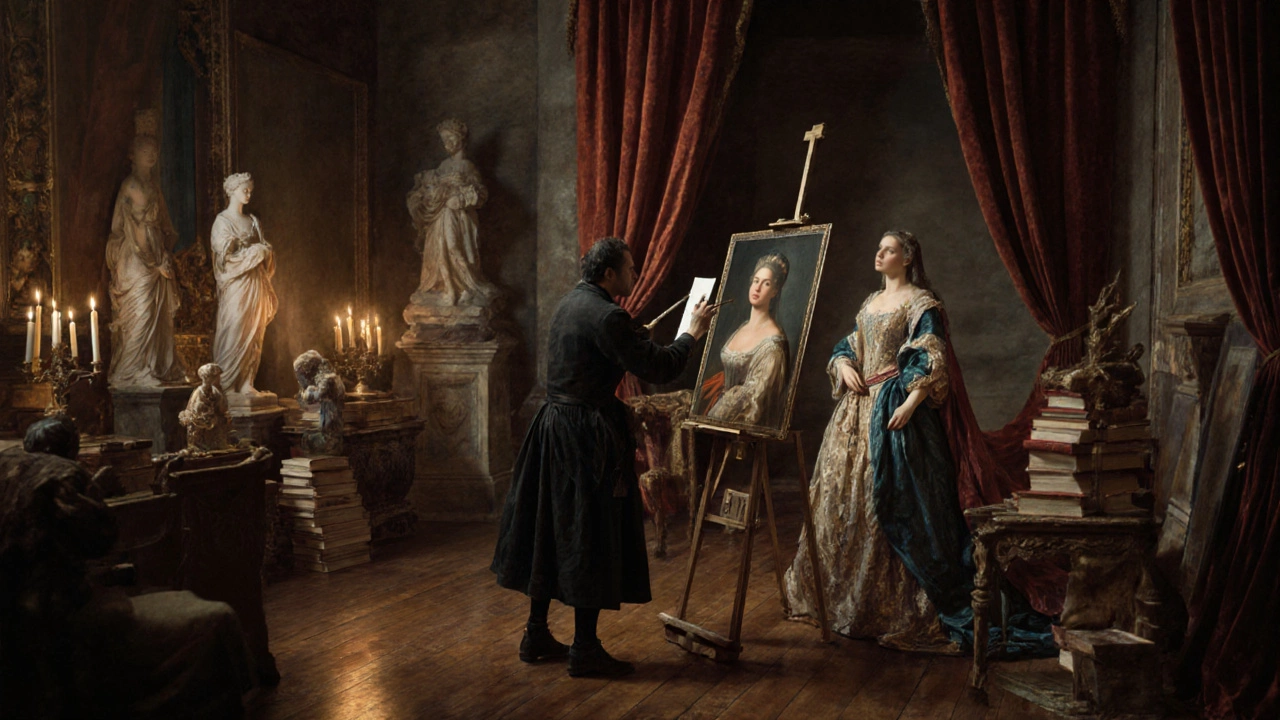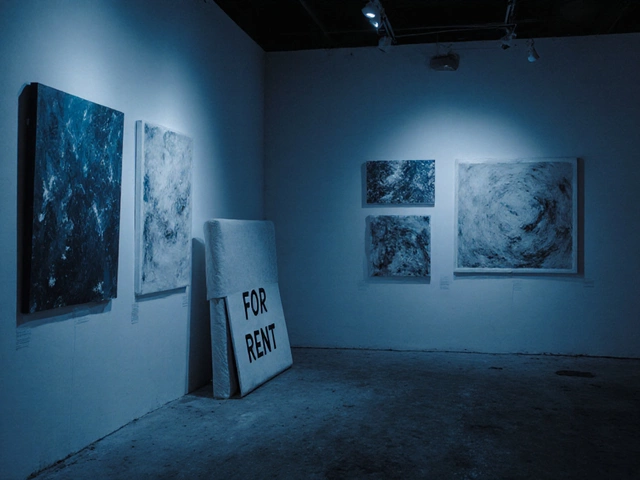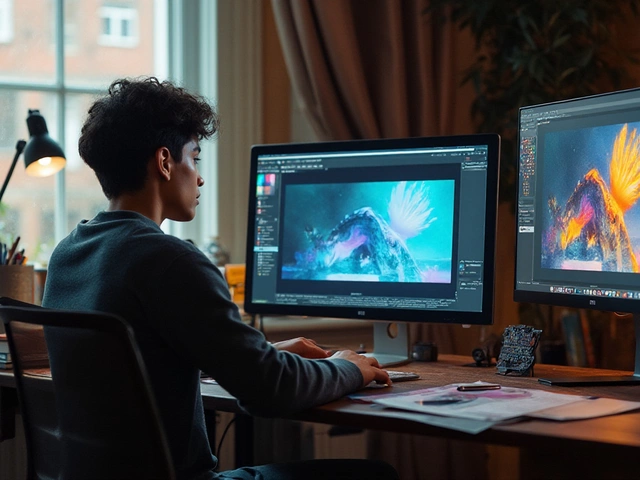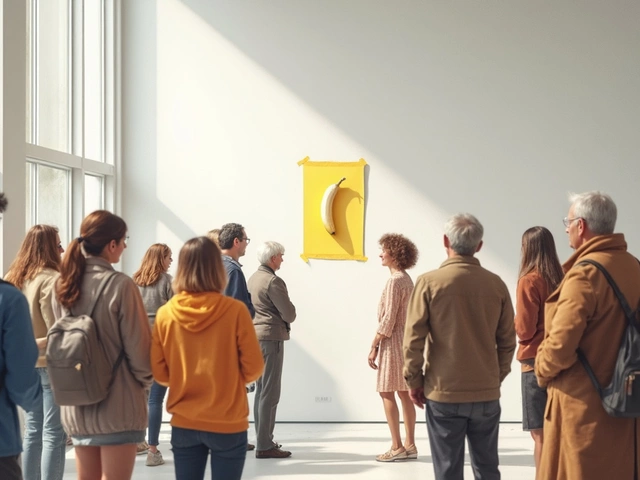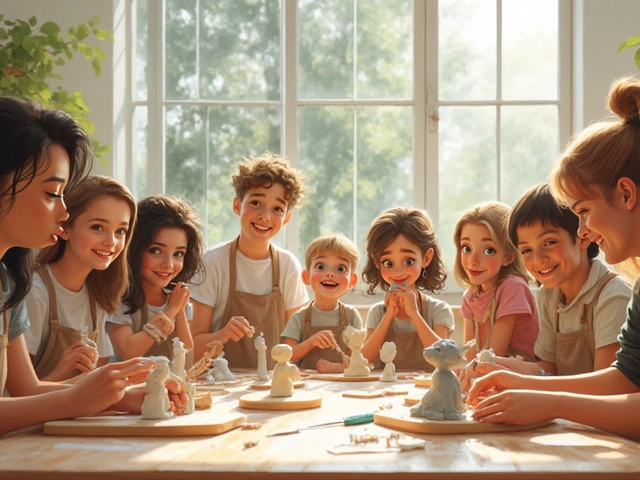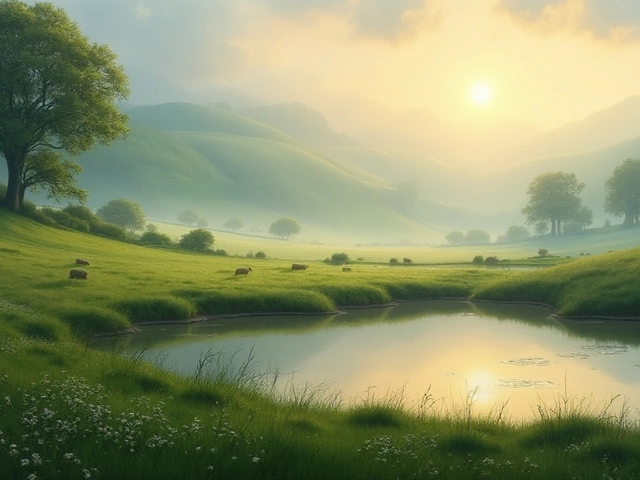Fine Art vs Modern Art Identifier
Use this tool to determine whether a work of art belongs to the fine art or modern art period based on key characteristics. Select the options that best describe the artwork and we'll tell you which category it belongs to.
Artwork Characteristics
Art Period Identification
Select characteristics to see your result.
People often use "fine art" and "modern art" like they mean the same thing. But they don’t. One is a broad category. The other is a specific time period with its own rules, rebels, and revolutions. If you’ve ever stood in front of a Picasso and wondered why it looks so different from a Rembrandt, you’re not alone. The gap between them isn’t just style-it’s philosophy.
Fine art is about skill, tradition, and beauty
Fine art isn’t a style. It’s a category. It’s the label given to art made primarily for aesthetic and intellectual purposes, not function. Think of it as the umbrella under which centuries of painting, sculpture, and drawing landed before the 20th century. Fine art was about mastery: perfecting anatomy, mastering perspective, capturing light and shadow with oil paint. Artists trained for years in academies to learn how to make things look real.
Think of Michelangelo’s David. Every muscle, every vein, every fold of skin was carved with precision. Or Vermeer’s Girl with a Pearl Earring-the way the light hits the pearl, the softness of the lips, the quiet intensity of the gaze. These weren’t just pretty pictures. They were demonstrations of technical control, often commissioned by churches, royalty, or wealthy patrons who wanted to see their power, piety, or beauty immortalized.
Fine art followed rules. Rules about composition, proportion, harmony. Even when artists broke them, they did so knowing the rules first. There was a clear hierarchy: history painting (biblical, mythological scenes) sat at the top, then portraiture, then landscape, and still life was near the bottom. Art had a purpose: to elevate, to teach, to inspire awe.
Modern art broke every rule
Modern art started around the 1860s and lasted until the 1970s. It didn’t just change how things looked-it changed why art existed. The invention of the camera was a shock. Why spend months painting a portrait when a photograph could do it in seconds? Artists didn’t try to compete. They turned inward. What if art wasn’t about copying the world, but expressing how you felt about it?
Monet painted water lilies not to show you a pond, but to show you how light danced on water at different times of day. Van Gogh twisted his cypress trees into flames because emotion needed to be seen, not just described. Matisse used flat colors and rough lines because he believed color could carry feeling without needing realistic shapes.
Modern art had movements, each one a rebellion:
- Impressionism-loose brushwork, light over detail
- Cubism-Picasso and Braque shattered objects into geometric fragments
- Surrealism-Dali and Magritte painted dreams, not reality
- Abstract Expressionism-Pollock flung paint, Rothko painted color fields that made you feel
Modern art didn’t care if you "understood" it. It cared if it moved you. Or confused you. Or challenged you. It was about the artist’s inner world, not the outer one.
Timeline matters: when did each exist?
Fine art covers everything before 1860. That’s Renaissance, Baroque, Rococo, Neoclassicism-all fine art. Modern art begins with the Impressionists in the 1860s and ends roughly in the 1970s, when postmodernism started to question whether anything could still be "modern."
So if you’re looking at a 15th-century altarpiece, it’s fine art. A 1912 Picasso portrait of a woman with a cube for a nose? Modern art. A 2020 painting of a floating toaster? That’s contemporary art-something else entirely.
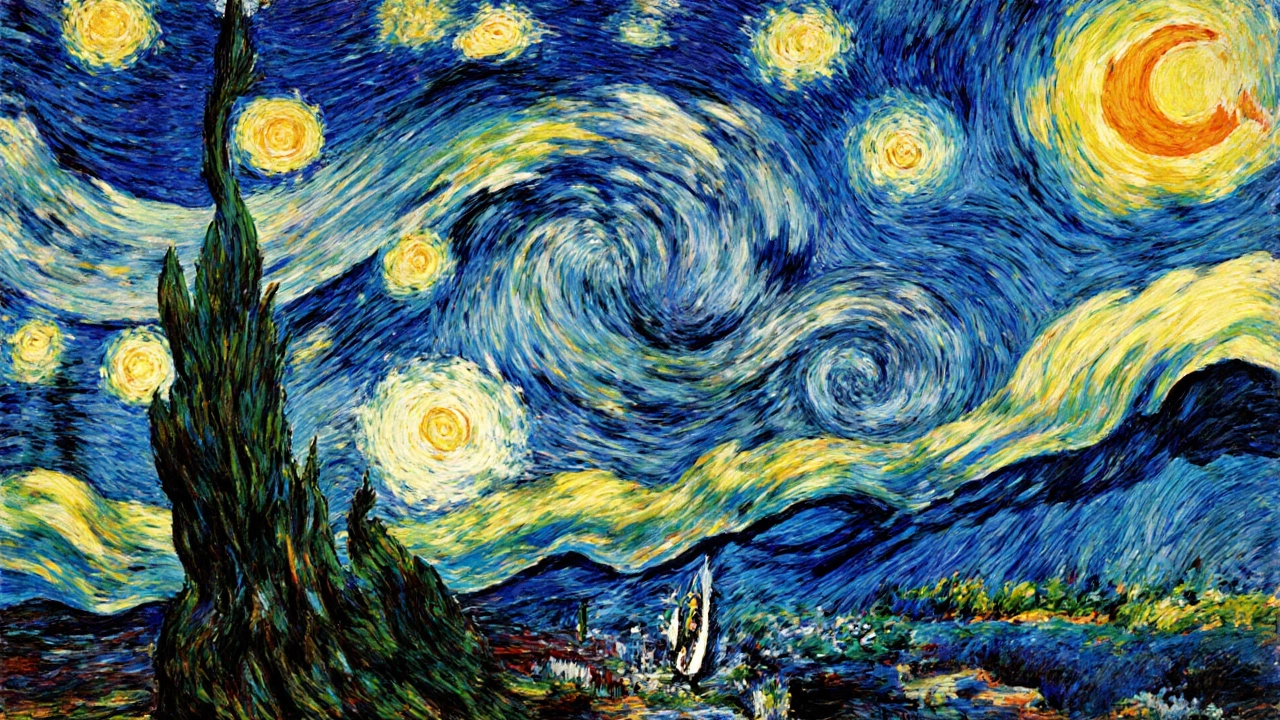
Modern art isn’t just "weird"-it’s a reaction
Some people dismiss modern art as "my kid could paint that." But that misses the point. The value isn’t in technical skill alone. It’s in the idea. The shock. The shift.
When Duchamp put a urinal on a pedestal and called it Fountain in 1917, he wasn’t saying toilets are beautiful. He was asking: "What even makes something art?" That question changed everything. After that, art didn’t need to be beautiful. It didn’t need to be made by hand. It didn’t even need to be an object.
Modern art responded to industrialization, war, psychology, and new science. Freud was exploring the unconscious. Einstein was rewriting physics. Artists were doing the same with vision. They weren’t lazy. They were redefining.
Where do they overlap? And where do they diverge?
There’s one big overlap: both fine art and modern art are created for contemplation. Neither is a poster, a logo, or an advertisement. They’re meant to be looked at, thought about, felt.
But here’s the split:
| Aspect | Fine Art | Modern Art |
|---|---|---|
| Time Period | Pre-1860 to early 19th century | 1860s to 1970s |
| Primary Goal | Represent reality beautifully | Express emotion, ideas, or critique |
| Technique | Highly refined, academic training | Experimentation, breaking rules |
| Subject Matter | Religious, historical, portraits, landscapes | Inner psyche, abstraction, social issues, everyday objects |
| Viewers’ Expectation | Recognize, admire, be moved by skill | Be challenged, confused, provoked |
| Key Artists | Leonardo da Vinci, Rembrandt, Raphael | Monet, Van Gogh, Picasso, Duchamp, Pollock |
One thing modern art inherited from fine art: the belief that art matters. But it flipped the script. Fine art said: "This is how the world looks." Modern art said: "This is how I see it-and maybe you should too."
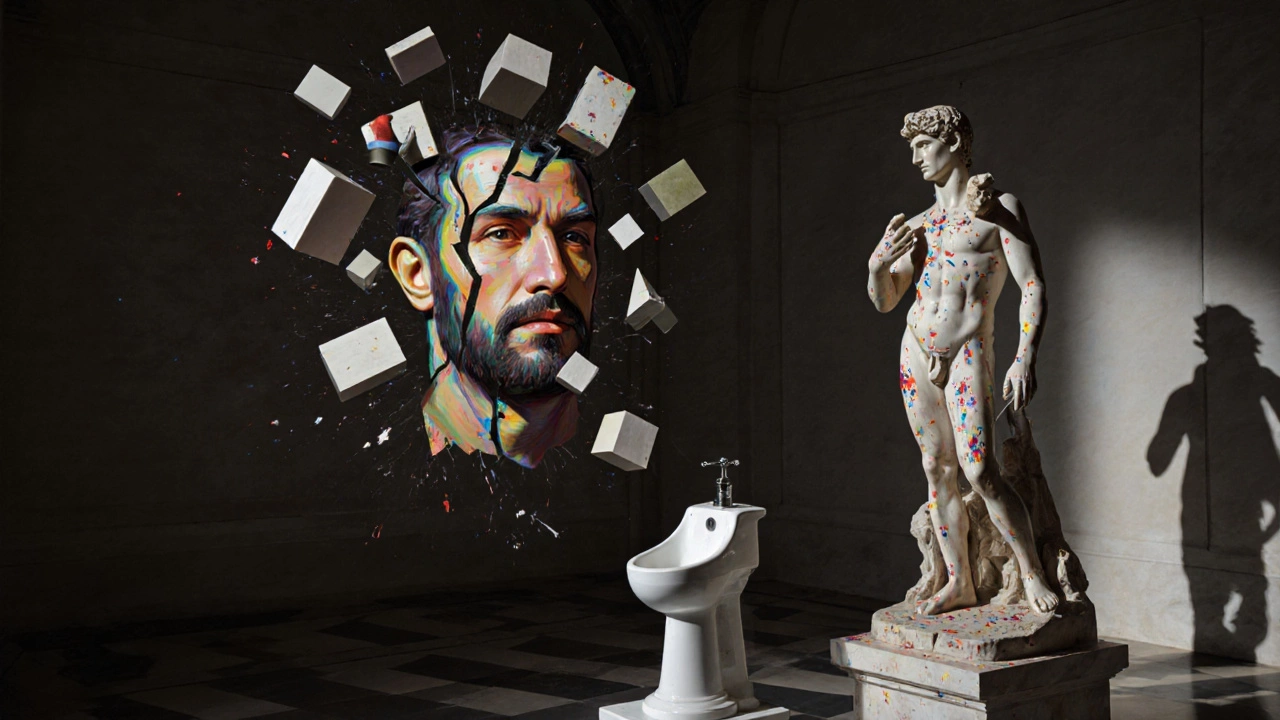
What about contemporary art?
Don’t confuse modern art with contemporary art. They’re not the same. Modern art ended in the 1970s. Contemporary art is what’s being made now-today, in 2025. It’s digital installations, performance pieces, AI-generated images, protest murals, NFTs. It doesn’t follow one movement. It’s pluralistic, messy, global.
Modern art was a revolution. Contemporary art is the aftermath. It asks questions modern art started, but it doesn’t have to answer them the same way.
Why does this distinction matter?
Because it changes how you look at art. If you walk into a museum and see a 17th-century portrait, you’re seeing a window into a world that valued order, hierarchy, and realism. If you see a Jackson Pollock drip painting, you’re seeing a reaction to war, alienation, and the collapse of old systems.
Knowing the difference helps you stop saying, "I don’t get it," and start asking, "What is this trying to tell me?"
Fine art gives you beauty. Modern art gives you truth-even when it’s ugly, strange, or uncomfortable. And sometimes, that’s more valuable.
Is modern art really art if it doesn’t look realistic?
Yes. Modern art doesn’t aim to copy reality. It aims to express ideas, emotions, or critiques. A Picasso portrait might distort faces to show inner tension. A Rothko painting uses color to evoke mood. The value isn’t in how lifelike it is-it’s in how deeply it makes you feel or think.
Can fine art include abstract pieces?
Rarely, and only near the end of the fine art era. Before the 19th century, abstraction was almost nonexistent in Western fine art. Even in religious art, figures were stylized but still recognizable. True abstraction-non-representational shapes with no reference to the physical world-only became common with modern art movements like Kandinsky’s work in the early 1900s.
Why is modern art so expensive if it looks simple?
It’s not the brushstrokes that cost money-it’s the idea, the timing, and the influence. A Pollock drip painting might look like random splatters, but it was part of a revolution that changed how the world saw art. These works are rare, historically significant, and tied to major cultural shifts. Their value comes from context, not technique alone.
Did modern artists reject all traditional skills?
Not at all. Many modern artists were classically trained. Picasso mastered academic drawing before he broke it apart. Matisse studied anatomy and perspective. They didn’t reject skill-they used it as a foundation to push beyond. The rebellion wasn’t against technique. It was against the expectation that art had to look a certain way.
Is all contemporary art modern art?
No. Contemporary art is what’s being made now. Modern art ended in the 1970s. A painting from 2024 might look like a Picasso, but if it was made after 1970, it’s contemporary. The labels are about when it was made, not how it looks.
Final thought: it’s not about which is better
Fine art and modern art aren’t rivals. They’re chapters in the same book. One built the foundation. The other tore it down to rebuild something new. You don’t need to like both. But if you understand why they exist, you’ll never walk into a gallery again without seeing more than paint on canvas.
